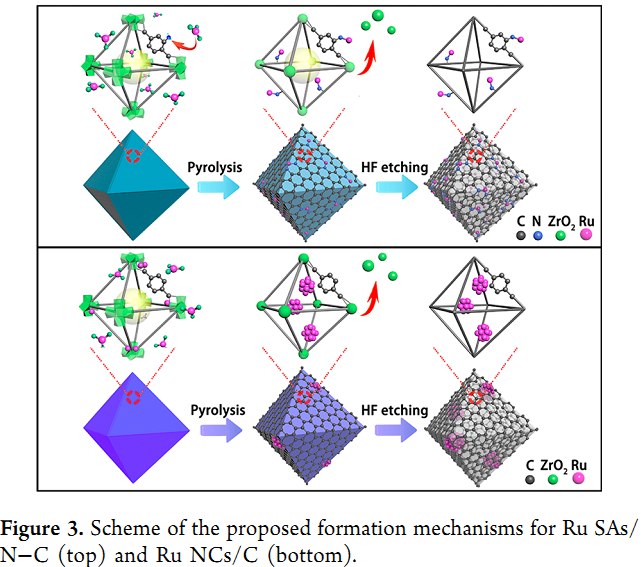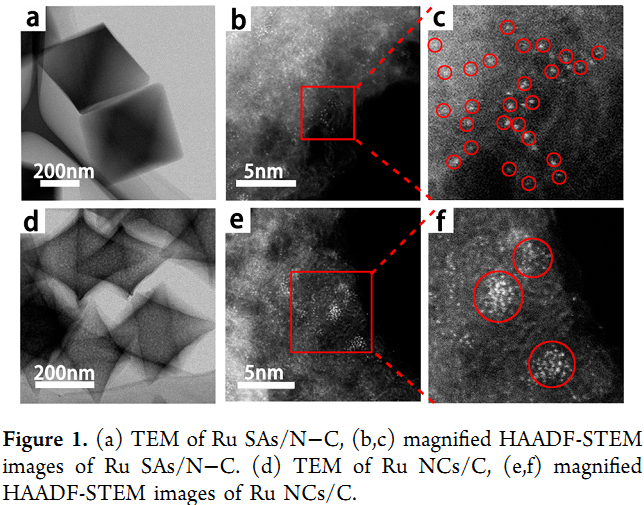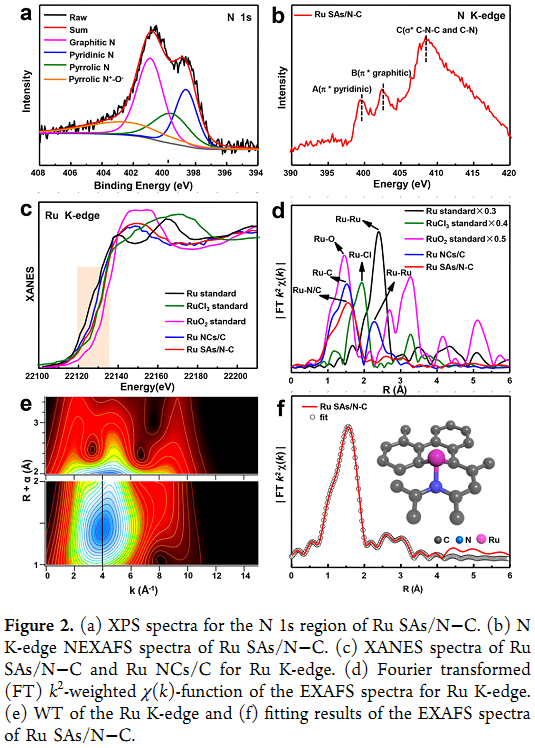Uncoordinated Amine Groups of MOFs to Anchor Single Ru Sites as Chemoselective Catalysts toward the Hydrogenation of Quinoline
发布时间:2017-08-07 浏览次数:760
In recent years, atomically dispersed single site catalysts have attracted extensive attention due to their maximum atom utilization, superior catalytic activity, and excellent selectivity. These single atom catalysts act as an ideal model system that can potentially bridge the gap between heterogeneous and homogeneous catalysis. The catalytic performance of the single atom catalysts is highly dependent on their structures, such as coordination ligands, dispersion gesture, and the interactions with supports.
Recently, iChEM researchers, Prof. Yuen Wu’ (USTC) and Prof. Yadong Li’s (Tsinghua University) groups report a new strategy for constructing noble metal single atom catalysts by using MOFs as precursors for the first time. An isolated single ruthenium site supported on nitrogen-doped porous carbon (Ru SAs/N-C) catalyst was successfully prepared using this strategy, and served as a semi-homogeneous catalyst to effectively catalyze chemoselective hydrogenation of functionalized quinolones. This work “Uncoordinated Amine Groups of Metal−Organic Frameworks to Anchor Single Ru Sites as Chemoselective Catalysts toward the Hydrogenation of Quinoline” was published in J. Am. Chem. Soc. (J. Am. Chem. Soc. 2017, 139, 9419−9422). PhD student Xin Wang from University of Science and Technology of China and Postdoc WenXin Chen from Tsinghua University are the first authors.
Prior to this work, Prof. Wu’s groups also reported non-noble metal single atom catalysts can be prepared by converting atomically dispersed metal nodes in-situ from MOFs (Angew. Chem. Int. Ed. 2016, 55, 1-7). A distinguishing feature of the newly-developed strategy is that the noble metal single-atom catalyst can be successfully constructed from the MOFs precursor, as the noble metals (Au, Ag, Pt, Ru ions, etc.) have been rarely employed as the nodes of MOFs.
The authors utilized uncoordinated -NH2 located at the terephthalic acid linkers in UiO-66-NH2 as the Lewis base to stabilize RuCl3. The strong interaction between the lone pair electrons and d-orbitals would effectively anchor the Ru single atoms in the pores of MOFs and further prevent their aggregation during pyrolysis at high temperature. After the pyrolysis process, the building skeleton of MOFs was transferred in-situ into porous carbon, which was decorated by small ZrO2 crystals and Ru species. This was followed by HF etching to prepare N-C-anchored single atom Ru (Single atoms) catalyst (Ru SAs / N-C). In contrast, without the assistance of the free -NH2, Ru clusters were observed after the pyrolysis process.

Aberration corrected high-angle annular dark-field scanning transmission electron microscope (HAADF-STEM) was employed to further reveal the details of samples.The brighter spots assigned to the heavier Ru atoms exhibited atomic dispersion on N-doped carbon support. Again, this strongly supports that the uncoordinated -NH2 groups could effectively stabilize the RuCl3 precursor and prevent their aggregation during the pyrolysis process. While without the assistance of -NH2 groups, we observed a large proportion of Ru atoms aggregated at high temperature, resulting in the formation of Ru nanoclusters on the support.

The N1s spectrum shows the N in Ru SAs / N-C was in the form of graphitic N, pyridinic N, and pyrrolic N. The X-ray absorption near-edge structure (XANES) reveals that the Ru in SAs / N-C was in +3 valence. The extended X-ray absorption fine structure spectrum (EXAFS) indicates Ru‒Ru bonds were not present in the Ru SAs / N-C. The Ru shell coordination number was calculated to be 2.6 ± 0.5 by EXAFS curve fitting.
The N-doped porous carbon material formed by high-temperature pyrolysis of MOFs exhibited large pore volume and surface area. This feature would contribute to the efficient exposure of active sites to facilitate rapid transportation of substrates. Finally, the results demonstrate the Ru SAs / N-C can exhibit superior catalytic activity and selectivity for the selective hydrogenation of quinoline and its derivatives.
This work was supported by China Ministry of Science and Technology under Contract of 2016YFA (0202801), and the National Natural Science Foundation of China (21522107, 21671180, 21521091, 21390393, U1463202). This work made use of the resources and finance support of National Synchrotron Radiation Laboratory in Beijing and Shanghai。
http://pubs.acs.org/doi/abs/10.1021/jacs.7b01686 Link:
Back




